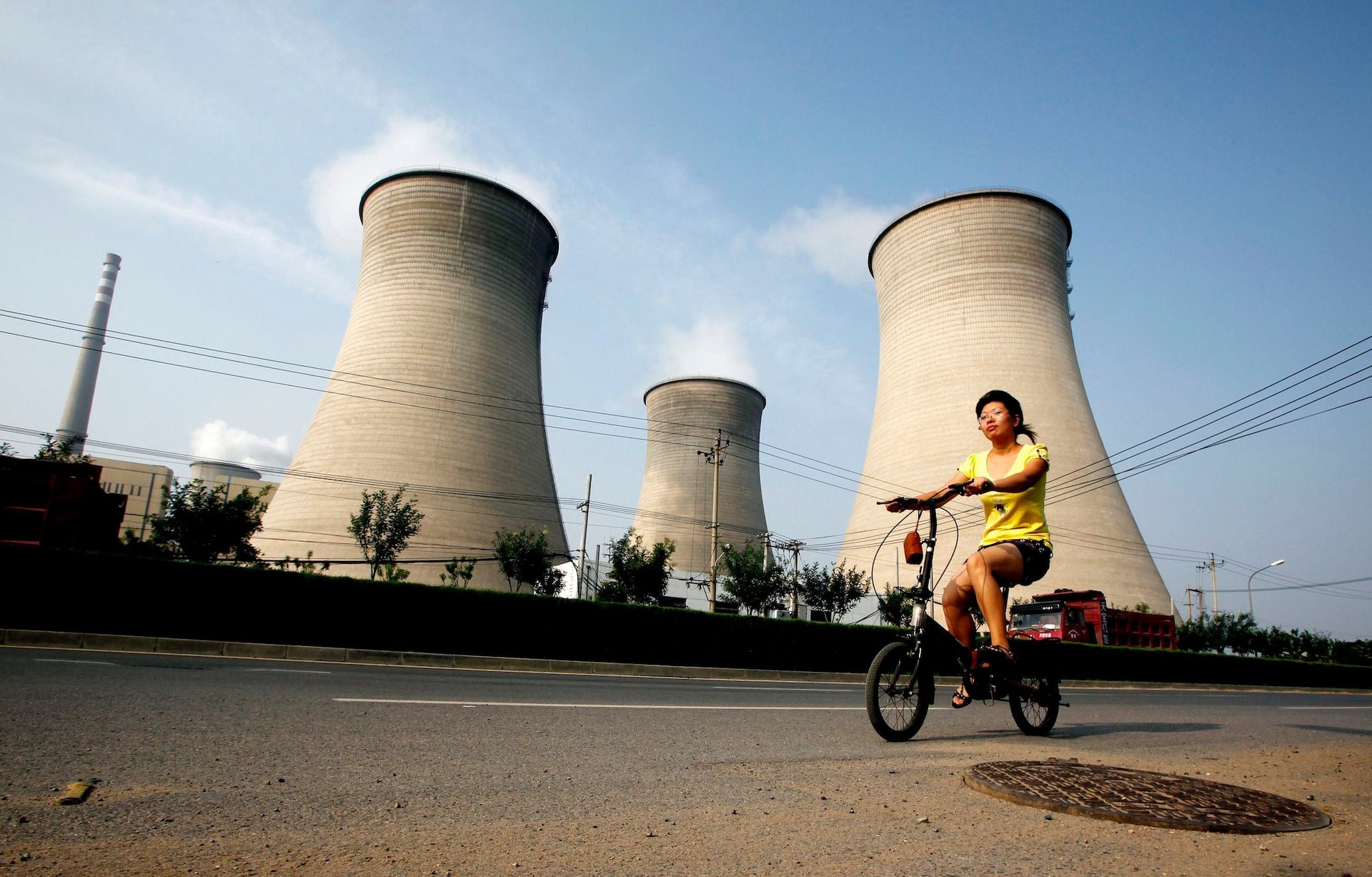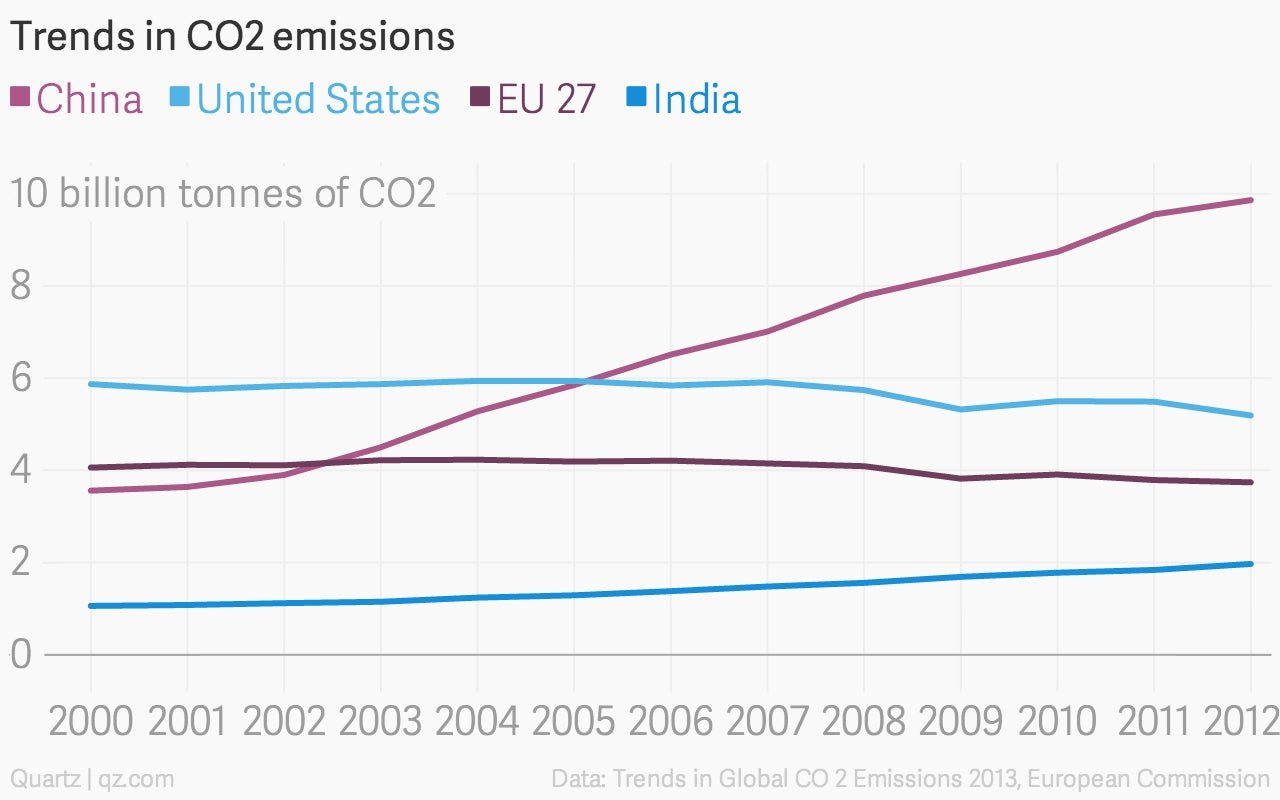Why India and China’s no-show at climate change talks could be a disaster
The leaders of the world’s largest and third-largest emitters of greenhouse gases won’t be attending a global summit on climate change later this month. China is sending a lower-ranked official; it’s not yet clear if India will send its environmental minister.


The leaders of the world’s largest and third-largest emitters of greenhouse gases won’t be attending a global summit on climate change later this month. China is sending a lower-ranked official; it’s not yet clear if India will send its environmental minister.
This is a bad sign for those hoping to put in place a legally binding international treaty in 2015 that commits industrialized and developing countries alike to cutting emissions. China and India, both of whom have called on developed nations to take the lead and help poorer countries, account for more than a third of the world’s green house gas emissions:
Moreover, while emissions have been falling in the US and the European Union, they have been growing in India and China, where coal is a main source of fuel. Between 1990 and 2012, CO2 emissions in the 27 countries of the European Union fell to 7.4 tonnes (8.14 tons) per capita from 9.1 tonnes, and in the US, they fell to 16.4 tonnes per capita from 19.6 tonnes, according to a report last year by the European Commission and the Netherlands Environmental Assessment Agency. Meanwhile in China, emissions jumped to 7.1 tonnes from 2.1 tonnes over the same period, according to the report.
Emissions are also picking up in India. Between 2011 and 2012, India’s total CO2 emissions grew 7.1%, compared to falls of 1.3% in the EU and 3.7% in the US.

The decision to abstain from the summit may also be self-defeating: India and China both are both struggling with smog and air pollution. And it could even cause conflict between the neighboring countries, as melting glaciers in the Himalayas and increasingly erratic rainfall could potentially increase tensions over water sources.